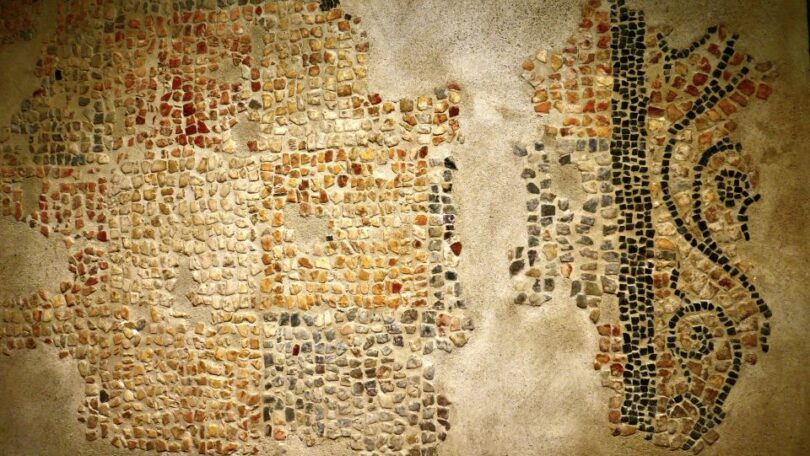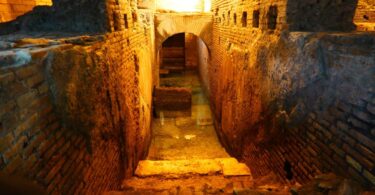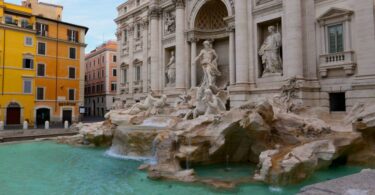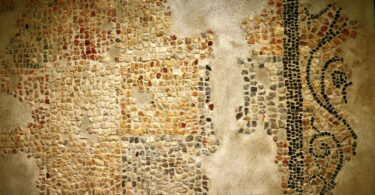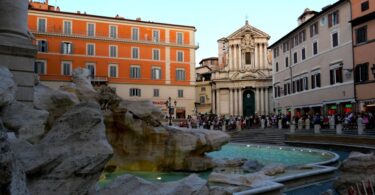1.459 Reviews
from €35.00 EUR
Duration: 40 Min.
Organized by: Touriks
Discover the hidden wonders of Rome’s iconic Trevi Fountain and its underground treasures with our captivating and expert-guided tour. Dive deep into the history, architecture, and legends surrounding this magnificent landmark.
Explore the Trevi Fountain with an Expert Guide
Join our knowledgeable local guide as we embark on a journey to uncover the beauty and secrets of the world-famous Trevi Fountain. Admire the intricate details of the Baroque masterpiece and learn about the mythological figures gracefully emerging from the stone.
The Fascinating History of the Trevi Fountain
Our expert guide will take you on a journey through time, unveiling the rich history of the Trevi Fountain. The Trevi Fountain, or Fontana di Trevi, is one of the most iconic landmarks in Rome, Italy, and a masterpiece of Baroque architecture. Its exquisite design and rich history have made it a must-see destination for tourists from all around the world.

Trevi Fountain and its Underground Guided Tour
The story of the Trevi Fountain starts with the ancient Roman aqueducts, which supplied fresh water to the city. Rome had an intricate network of aqueducts that spanned over 250 miles, making it one of the most advanced water systems in the ancient world. The Aqua Virgo, an aqueduct constructed in 19 BCE by Roman engineer Agrippa, is the water source for the Trevi Fountain. This aqueduct, named after a legend involving a young virgin who led soldiers to the spring, supplied water to the famous Baths of Agrippa and various public fountains.
The First Trevi Fountain
The first Trevi Fountain was commissioned in 1453 by Pope Nicholas V. Designed by architect Leon Battista Alberti, the fountain was a simple basin placed against a wall where the Aqua Virgo terminated. Alberti’s design followed the Renaissance style, emphasizing symmetry and geometric shapes. The wall surrounding the fountain featured reliefs and sculptures that depicted the Pope’s coat of arms and other religious symbols.
The Redesign of the Trevi Fountain
In the heart of the 18th century, Rome was abuzz with an ambitious project that would etch its name into history. Pope Clement XII, in the year 1730, cast an open challenge to the architects of the time: to reimagine the Trevi Fountain, a jewel in Rome’s illustrious crown. It was Nicola Salvi, a visionary with a bold dream, who emerged victorious from this creative contest. Salvi was not just crafting a fountain; he was sculpting a legacy. His blueprint promised to encapsulate the majestic essence of Rome, transforming the fountain into an emblem of the city’s splendor.
Salvi’s design breathed the spirit of the Baroque era—every curve, every sculpture whispered tales of grandeur and drama. The fountain was to be a canvas, portraying scenes of breathtaking intricacy and motion. Against the imposing backdrop of the Palazzo Poli, Salvi envisioned a facade that wasn’t just architecture, but a theatrical masterpiece adorned with sculptures and reliefs that captured the imagination.

Trevi Fountain
However, the journey from vision to reality was fraught with hurdles. The construction, which broke ground in 1732, was anything but smooth sailing. The project was ensnared in a web of political upheaval, financial woes, and a series of unforeseen delays. The twist of fate that saw Salvi passing away in 1751 further shrouded the endeavor in uncertainty. The baton was passed to Giuseppe Pannini, an architect who stepped in to steer the project through its final leg, making thoughtful alterations to Salvi’s original plans.
After three decades of persistence, in 1762, the curtain finally rose on the Trevi Fountain. Under the auspices of Pope Clement XIII, Rome welcomed a new masterpiece into its embrace. The fountain, with its dramatic cascades and intricate sculptures, was more than a marvel of engineering—it was a symbol of the city’s enduring allure and artistic heritage.
Sculptures and Symbolism
- Oceanus: The central figure of the Trevi Fountain is Oceanus, the ancient Roman god of all water. Sculpted by Pietro Bracci, Oceanus stands atop a shell-shaped chariot, symbolizing his dominion over the seas.
- The Tritons and Sea Horses: On either side of Oceanus, two Tritons (mythological sea creatures) guide the chariot, each leading a sea horse. The sea horses represent the dual nature of the ocean, with one being calm and the other wild and untamed.
- Abundance and Health: Flanking the central sculptures are two allegorical figures representing Abundance and Health. Abundance, depicted holding a horn of plenty, signifies the prosperity brought by the Aqua Virgo. Health, holding a cup from which a snake drinks, represents the healing qualities of the aqueduct’s water.
Delve into the Underground World Beneath Rome’s Streets
Experience Rome’s hidden side as we venture 9 meters below ground to explore the ancient aqueduct that still supplies water to the Trevi Fountain.
- Discover the 2,000-Year-Old Aqueduct: Get a rare glimpse into the marvels of Roman engineering as we explore the ancient, still-functioning aqueduct. Constructed over 2,000 years ago, this impressive feat of engineering continues to supply water to the fountain above.
- Unearth the Remains of an Imperial Domus: As we journey through the underground world, we’ll come across the remains of an imperial Domus, an ancient Roman residence that provides insight into the daily lives of Rome’s elite.
Embark on a captivating journey through Rome’s history and hidden treasures with our expert-guided Trevi Fountain and its Underground tour. Book your spot today and let us unveil the secrets of this iconic landmark.
from €40.00 EUR
Duration: 2.5 Hours
Organized by: Roman Holiday Travel
327 Reviews
from €300.00 EUR
Duration: 3 Hours
Seller: Isango
from €39.00 EUR
Duration: 3 Hours
Organized by: Rome Your Way
953 Reviews
from €21.00 EUR
Seller: Tiqets
455 Reviews
from €89.00 EUR
Duration: 3 Hours
Organized by: Eternal City Tours
5 Reviews
from €99.00 EUR
Duration: 1.5 hours
Organized by: Opera Omnia Events s.r.l
29 Reviews
from €29.00 EUR
Seller: Tiqets
426 Reviews
from €115.00 EUR
Duration: 80 Min.
Seller: Tiqets
from €25.00 EUR
Duration: 2.5 Hours
Organized by: Musica & Musica
153 Reviews
from €75.00 EUR
Duration: 3 Hours
Organized by: Fat Tire Tours
527 Reviews




